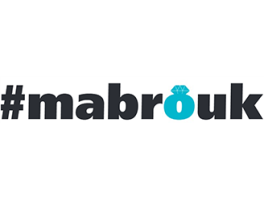Sally lost her engagement ring and she and her family spent over a week searching for her precious diamond. When the continued search proved to be futile, her husband purchased a wedding band to replace her diamond ring. Six months later, Sally and her husband hired the services of Avi, a contractor, to reconstruct their bathroom. Avi ripped out a built-in vanity of the bathroom and disassembled it outside, in front of the house. A hidden surveillance camera caught Avi pocketing the ring, which he found wedged behind the drawer of the vanity. Before Sally called the police, she reached out to our Bet Din to assist her in collecting her valuable ring in an amicable manner. In Bet Din Avi defended his position, claiming that since Sally lost the ring, she apparently despaired from ever retrieving it. Furthermore, he was in the process of trashing the contents of the bathroom and if not for his finding the ring, it would have been lost. Avi expressed that he is graciously willing to give back the sentimental ring to Sally if she monetarily reimbursed him with its market value. Sally was livid and her violent reaction to Avi’s claim caused the hearing to end abruptly.
Is Avi entitled to monetary compensation for the value of the ring or not? How should the Bet Din rule and why?
Torah Law
According to the ruling of the Shulhan Aruch a finder is entitled to keep a lost object if it is established that the owner despaired from ever retrieving it. This rule is subject to numerous rules and regulations, some of which are within the context of this article. However, prior to keeping a lost object, one is required to first consult with a competent halachic authority.
Leading halachic authorities debate whether an object that is lost on an owner’s property is subject to the above-mentioned ruling. On the one hand it stands to reason that even if an owner despairs from retrieving a lost object, another party may not claim its ownership, since it was technically never lost to the owner. The lost object was unknowingly in the possession of its owner all along and his despair cannot effectively render the object as ownerless. On the other hand, some halachic authorities view an owner who despairs from retrieving a lost object as having performed an act of abandonment, thereby allowing another party to take ownership even if the object was found on the owner’s property.
Additionally, even according to the former opinion, which restricts a finder from taking possession, some halachic authorities limit this restriction to instances in which the object was found in a protected area on the owner’s property. If, however, the lost item was found outside on an unprotected area in the owner’s domain, the finder is entitled to his keep. Other views differ, and restrict a finder from keeping an object found on an owner’s property regardless if it was in a protected area or not.
The above-mentioned rulings are applicable only when an owner despairs from ever retrieving the lost item. A primary illustration of an owner despairing from retrieving his lost item is when he verbally expresses his anguish that the item lost represents a financial loss. Alternatively, when it is apparent that an owner despaired from retrieving the lost item, either because of the amount of time that elapsed since it was lost or the like, a finder may take possession. As aforementioned, some halachic authorities restrict such activity in the event the item was found on the owner’s property.
By rule of the Shulhan Aruch, upon verification of an item’s rightful owner, a finder is required to conduct himself beyond the letter of the law and to return a lost object even if the owner already despaired. While a Bet Din will not legally enforce a defendant’s compliance with a ruling beyond letter of the law, it will nevertheless strongly instruct him to conform to his social and moral responsibilities that are cited in the Shulhan Aruch.
VERDICT: Serving as a Referee
Our Bet Din ruled that Avi is required to immediately return the wedding ring to Sally. We instructed him to apologize to her for his gross misconduct. Additionally, our Bet Din chastised Sally for her inappropriate violent behavior during their initial hearing. Instead of defending her position in an organized and productive manner, her reaction was rash and counterproductive.
As mentioned in Torah law, although Sally despaired from ever finding her ring, nevertheless, Avi was restricted from taking the ring for himself. Since the ring was all along in Sally’s home, according to numerous opinions Sally’s despair cannot effectively render her ring as ownerless. In short, since the ring was in her home it was never considered lost from a legal standpoint. While other opinions differ, it is common practice of a rabbinical court to rule in compliance with the above-mentioned view. Although Avi found the ring in front of Sally’s home, nevertheless, upon inquiry, the exact area in which it was found was clearly within the property line. Additionally, based on the video review, it was somewhat evident that Avi detected the glittering diamond when he first exited the doorway of the house. The doorway of Sally’s home is clearly a protected area in Sally’s domain and thus satisfies other halachic opinions that support this ruling.
Lastly, by rule of the Shulhan Aruch, Avi is required to conduct himself morally and must comply with social norms. Thus, even if he has a legal claim to the ring, he should return it to Sally and conduct himself beyond the letter of the law as cited in the Shulhan Aruch.
YOU BE THE JUDGE
How Embarrassing!!
Audrey sent her daughter to a local elementary school. Unhappy with her daughter’s progress throughout the school year, she wrote a brief text to many members of the board of directors of the school complaining that her daughter’s sudden regression is the result of her daughter’s terribly under-qualified teacher. After detailing the teacher’s shortcomings, she added a genuine request not to disclose her complaint or identity to the teacher. Audrey’s wrote that her reasoning for the confidentiality was because the teacher was clearly an unstable individual who is likely to avenge the complaint in a fierce and uncontrolled manner. Shortly thereafter, one of the board members, a friend of the teacher, showed the teacher Audrey’s nasty text message. The teacher was appalled by the audacity of the text and was mortified that many of her employers and other staff members might actually believe it. The teacher turned to our Bet Din and complained that the text was only written because Audrey’s son was going through a bitter divorce with her niece. The text message was not only false, it was deeply embarrassing. The teacher explained that she is in so much distress that she can barely show her face in school. Although she believes that because of her good reputation as a teacher the text will not cause her to lose her job, nevertheless, she is seeking financial compensation for the anguish of embarrassment and defamation of character. The teacher added that only via payment authorized by a Bet Din can her name and status be rightfully restored. Audrey defended that her complaint is truthful and unrelated to her son’s divorce, and thus, she is unwilling to compensate the teacher.
How should the Bet Din rule in favor of Audrey or the teacher, and why?













